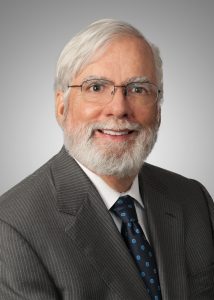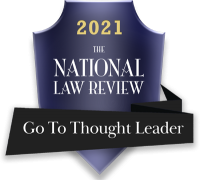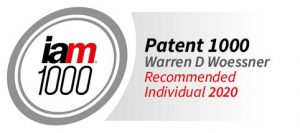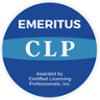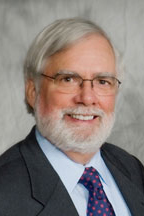This is a guest post from Paul Cole.
 As readers will be aware, the USPTO published revised Guidance on Section 101 eligibility in December 2014 together with Nature-Based Examples and Abstract ideas examples. These materials and the case-law on which they were based appear on a dedicated web-page.
As readers will be aware, the USPTO published revised Guidance on Section 101 eligibility in December 2014 together with Nature-Based Examples and Abstract ideas examples. These materials and the case-law on which they were based appear on a dedicated web-page.
A Forum on the revised Guidance was held on 21 January with contributions from Raul Tamyo on behalf of the USPTO and from eight members of our profession. Their slides are accessible on the web-page. It also promises a Forum Replay in three parts, but those wishing to hear in detail what was said will be disappointed because the three links are broken and play nothing. The comments period ended on 16 March, and the absence of a workable Forum Replay (which has been pointed out to the USPTO) would arguably in itself justify an extension of the comments period for our profession and for the public.
Comments from the AIPLA, the American Bar Association, IPO, Bio, the Japan Intellectual Property Association, the Japan Patent Attorneys Association and the Japan Pharmaceutical Manufacturers Association appear on a dedicated web-page together with comments from less patent-friendly organizations such as the American Civil Liberties Union which has commented jointly with the Association for Molecular Pathology Breast Cancer Action. The damage inflicted by the previous Guidance is noted by Bio which in their latest comments observe:
“Importantly, even under the revised Interim Guidance, isolated enzymes, proteins, pure preparations of naturally-occurring medicinal molecules, fungal and bacterial antibiotics, nucleic acid probes and primers, certain fermentation products, molecular markers, and similar preparations apparently continue to be patent-ineligible, or appear to be patentable, if at all, only at significant loss of claim scope. This will be a matter of concern for our members going forward. We are troubled that the standards for patentability of nature-based products thus continue to be manifestly different between the United States and its major trading partners in Europe, Japan, Korea, Canada, Australia, China, and other major industrialized countries. Foreign applicants who first file their priority application under different legal standards in their home countries are likely to encounter traps for the unwary when they enter the United States.”
This problem was a major theme of my comments. (A PDF of these comments can be found at the end of this post.) It is reassuring to find that those comments support a position also taken by the ABA both comments pointing to the dangers of non-compliance with the TRIPS Agreement. (A PDF of the ABA comments can be found at the end of this post.)
As regards US law, it is suggested with reference to Myriad that more interpretive skill is needed than that of an astute columnist of the New York Times with a degree in economics. If there is a pertinent international agreement, then both statute and judicial opinions should on the Charming Betsy principle be construed in accordance with its provisions, doubly so in the case of TRIPS because the US Government was a principal moving spirit behind the agreement. A further suggested canon of construction is that a judicial opinion should not be construed to cover a position that has been agreed between the parties in argument and has hence become common ground.
In addition to the deficiencies of the existing Nature-Based Examples, there is a significant risk that recent Federal Circuit opinions may prompt the Office to take an even less positive approach, and warning against such a development is a major theme.
Thus the dictum of the Federal Circuit In re Roslin announcing a categorical exclusion for any existing organism found in the wild is is not only unsupported by Chakrabarty and Funk as alleged in the opinion but is also inconsistent with an express provision in Article 27 of TRIPS, and examples of recent microorganism patents granted by the EPO are given. A categorical exclusion for all naturally occurring sequences as in University of Utah is not only unjustified on a careful interpretation of Myriad but also is wholly inconsistent with TRIPS. Examples of patents covering naturally occurring genetic sequences and recently granted both by the EPO and the German patent office are given, and it is argued that the claim in issue in University of Utah would have been grantable under the provisions of German national law because the relevant sequences had been newly synthesized in isolated form, because they had new utility serving as primers in PCR, and because their new utility was specified in the claim as required for human-originating sequences. There was no reason to refuse patent-eligibility for the energy-generating plasmid of Example 6, and attention was directed to Acremonium plasmid example in my earlier submission for which strong eligibility arguments can be made.
Categorical exclusion of other natural products is also questioned having regard to the concession made in oral argument in Myriad and the subsequently filed comments of the Association for Molecular Pathology concerning the earlier draft of the Guidance. Retention of the amazonic acid example in any form is questioned, especially since the current wording of the example is plainly counter-factual and would be rejected by any competent pharmaceutical chemist.
While the notice in the Federal Register may arguably earn a β, even the belated appreciation that gunpowder is not a natural product does not enable the Nature-Based Examples to rise above the level of a γ. It is hoped that the Office will produce a further update more in accordance with informed scientific and legal thought.

